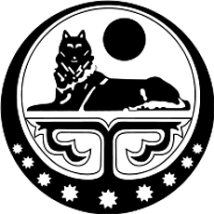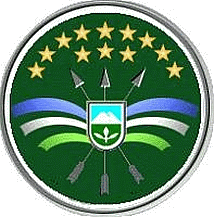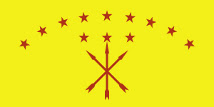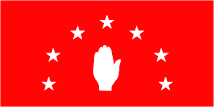Boysgar was a Naib (commander) appointed by Imam Shamil. In 1839, Shamil was defeated in Daghestan and fled to Chechnya, urging Chechen to fight. Boysgar welcomed Shamil. They fought together 20 years until Shamil's captivity. Long before Shamil's captivity, Boysgar lost his left eye, left arm, and left leg. However, being crippled, he continued to fight and take the lead in battles.
In 1959, the fortress of Gunib in Daghestan was blockaded by Russian army. Shamil made a decision to give up and went to Russian army. Boysgar tried to stop him, but Shamil did not stop and did not turn back. Later, when he was asked why he did so, he answered that Chechens do not shoot in back and that if he had turned back, Boysgar would have killed him.
Boysgar and the rest of Chechens preferred either to obtain freedom or be killed. They broke through the siege and went to Chechnya. Only 30 of them, including Boysgar, survived. Boysgar became Imam of Chechnya and was the leader of independent Chechnya for one year until his death.
Tuesday, August 18, 2009
Kunta-Hajji
In 19th century, Imam Shamil from Daghestan united nations of the North Caucasus (mainly, Daghestan and Chechnya) into one Muslim state - imamat - in order to resist Russian occupation of the North Caucasus. He was religious, political, and military leader in the North Caucasus. The war was long and Russian army had military superiority. Many people were killed. Eventually, Shamil was captured by Russians.
Shamil was welcomed by Russian king and was allowed to go to Mecca and Medina where he lived until his death.
In the end of the war, in Chechnya, Kunta-Hajji, another religious leader preached another version of Sufism and called Chechens to peace. Shamil persecuted Kunta-Hajji for his anti-war ideas. People who were tired of the war willingly accepted his teaching. He became popular.
However, Russian authorities were not satisfied with that. Kunta-Hajji was arrested and imprisoned for the rest of his life. Many of his followers were killed by Russian army. His teaching was forbidden and many of his followers were arrested and imprisoned.
This was absolutely unfair and illogical. Shamil who was the leader in the war against Russia was welcomed by Russian authorities. Kunta-Hajji who preached peace was imprisoned.
Chechens remember Kunta-Hajji and consider him as a saint (euliya).
More about him and his teaching:
1. Kunta-Khadzhi Kishiev
2. Kunta-Khadzhi Kishiev – the Chechen Mahatma Gandhi
3. The Diversity of the Chechen Culture by Lecha Ilyasov, pp. 66, 67.
Shamil was welcomed by Russian king and was allowed to go to Mecca and Medina where he lived until his death.
In the end of the war, in Chechnya, Kunta-Hajji, another religious leader preached another version of Sufism and called Chechens to peace. Shamil persecuted Kunta-Hajji for his anti-war ideas. People who were tired of the war willingly accepted his teaching. He became popular.
However, Russian authorities were not satisfied with that. Kunta-Hajji was arrested and imprisoned for the rest of his life. Many of his followers were killed by Russian army. His teaching was forbidden and many of his followers were arrested and imprisoned.
This was absolutely unfair and illogical. Shamil who was the leader in the war against Russia was welcomed by Russian authorities. Kunta-Hajji who preached peace was imprisoned.
Chechens remember Kunta-Hajji and consider him as a saint (euliya).
More about him and his teaching:
1. Kunta-Khadzhi Kishiev
2. Kunta-Khadzhi Kishiev – the Chechen Mahatma Gandhi
3. The Diversity of the Chechen Culture by Lecha Ilyasov, pp. 66, 67.
Chechensky
Alexander Chechensky was the first Chechen general in Russian army. His last name is the Russian word for "Chechen" (adjective).
He was born in Chechnya, but was brought to Russia when he was a child. He grew up in the family of Russian military officer Rayevsky who gave him a good education. Chechensky graduated from Moscow State University.
He began to serve in Russian army in the Caucasus in the wars against Turkey and Persia. Then, he successfully participated in the war with Napoleon in 1812 - 1814. In all his actions, he showed courage and ability as a military commander. His army subunits had many victories.
In the end of this war, he became a general. He received many rewards. He was a hero of the war with Napoleon.
However, most Russians do not know about him. His name as the name of Cherkassky was unfairly forgotten.
He was born in Chechnya, but was brought to Russia when he was a child. He grew up in the family of Russian military officer Rayevsky who gave him a good education. Chechensky graduated from Moscow State University.
He began to serve in Russian army in the Caucasus in the wars against Turkey and Persia. Then, he successfully participated in the war with Napoleon in 1812 - 1814. In all his actions, he showed courage and ability as a military commander. His army subunits had many victories.
In the end of this war, he became a general. He received many rewards. He was a hero of the war with Napoleon.
However, most Russians do not know about him. His name as the name of Cherkassky was unfairly forgotten.
Cherkassky
In history, probably, the most dangerous time for Russia was in the beginning of 17th century when the Polish occupied Moscow and appointed their governor over Russia. Most Russian dukes and princes were passive. There was almost no hope for Russia.
At that time, in Nizhny Novgorod, there was a prince Dmitry Mamstryukovich Cherkassky. He was the one who took initiative to release Russia from the Polish. Nizhny Novgorod city parliament had their gatherings in his palace. He inspired other members of the parliament, Minin and Pozharsky to join him in releasing Russia. They three and the people who joined them entered Moscow and released it from the Polish occupants.
In modern Russia, this day (November 4) is a national holiday. At the Red Square in Moscow, there is a monument to Minin and Pozharsky. However, Cherkassky who was the main initiator of the release of Moscow was forgotten. His name is seldom mentioned. These things often happened in Russian history.
There are two hypotheses regarding Cherkassky's nationality. Some historians consider him to be a Chechen, some think that he was a Circassian (Kabardian). His last name is formed from old Russian word "cherkas" or "cherkes" (in English, Circassian). At that time, this word was used to denote any nation in the North Caucasus including Chechens.
Cherkassky rescued Russia, but was unfairly forgotten.
At that time, in Nizhny Novgorod, there was a prince Dmitry Mamstryukovich Cherkassky. He was the one who took initiative to release Russia from the Polish. Nizhny Novgorod city parliament had their gatherings in his palace. He inspired other members of the parliament, Minin and Pozharsky to join him in releasing Russia. They three and the people who joined them entered Moscow and released it from the Polish occupants.
In modern Russia, this day (November 4) is a national holiday. At the Red Square in Moscow, there is a monument to Minin and Pozharsky. However, Cherkassky who was the main initiator of the release of Moscow was forgotten. His name is seldom mentioned. These things often happened in Russian history.
There are two hypotheses regarding Cherkassky's nationality. Some historians consider him to be a Chechen, some think that he was a Circassian (Kabardian). His last name is formed from old Russian word "cherkas" or "cherkes" (in English, Circassian). At that time, this word was used to denote any nation in the North Caucasus including Chechens.
Cherkassky rescued Russia, but was unfairly forgotten.
Subscribe to:
Posts (Atom)






